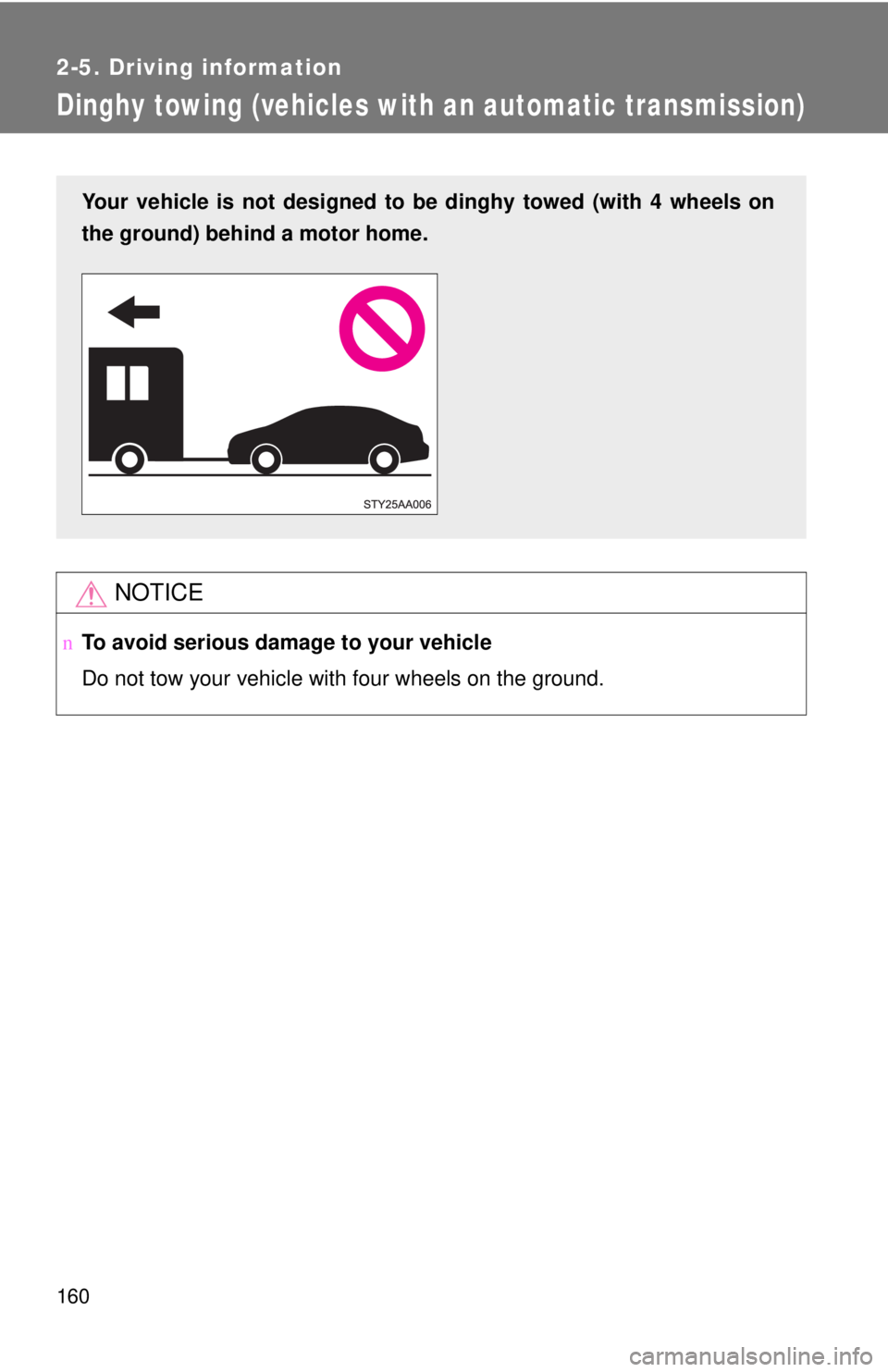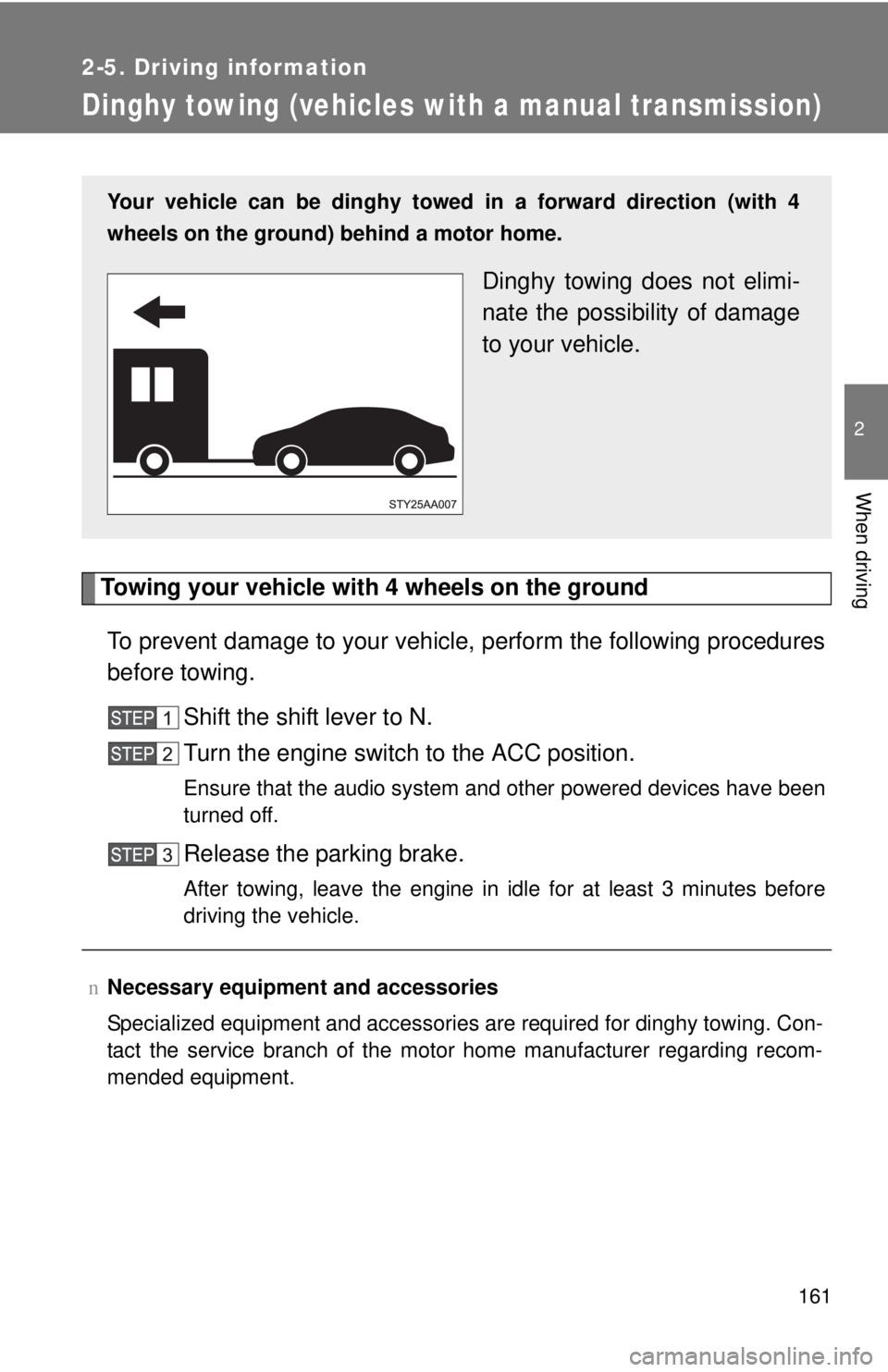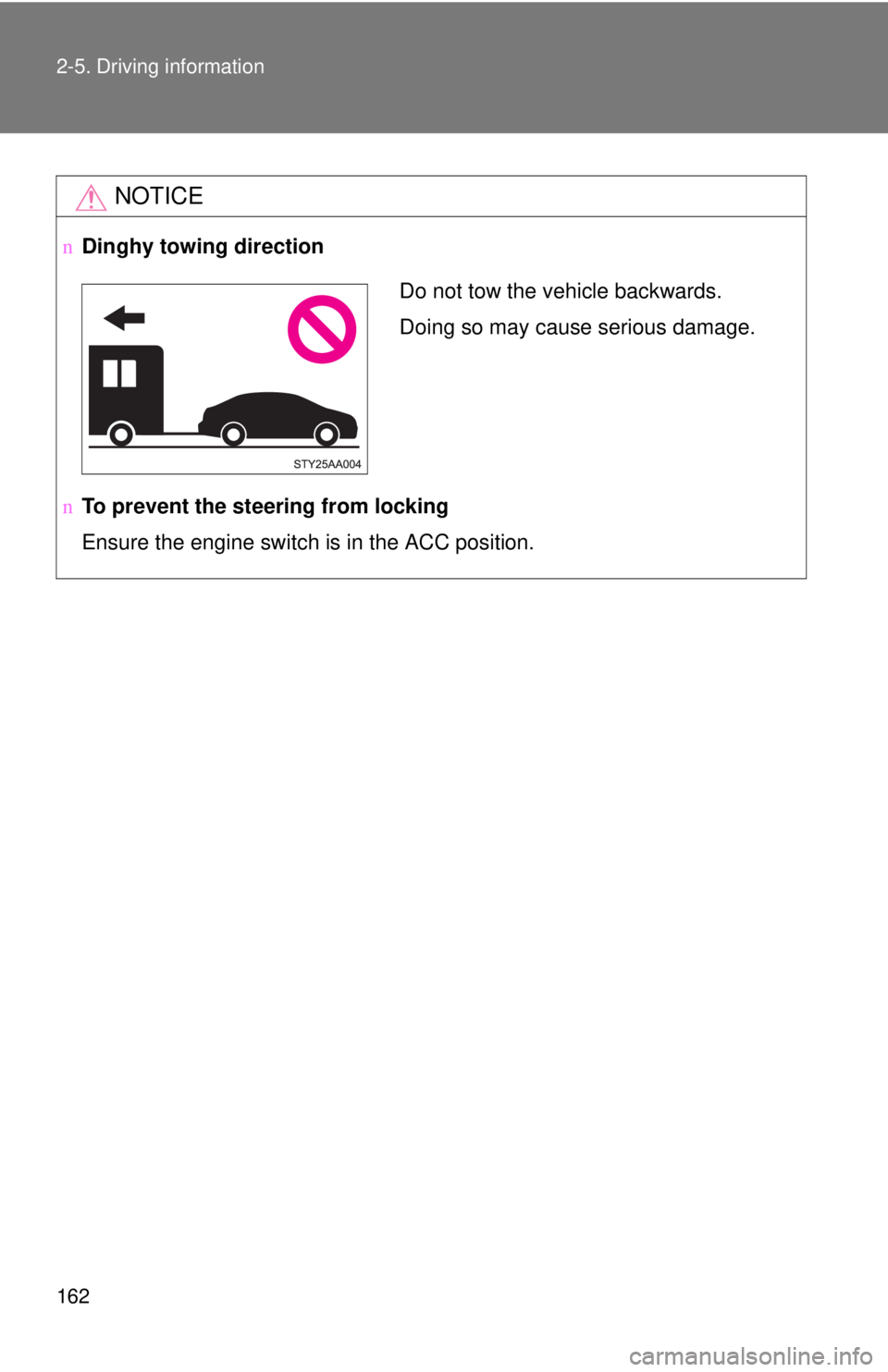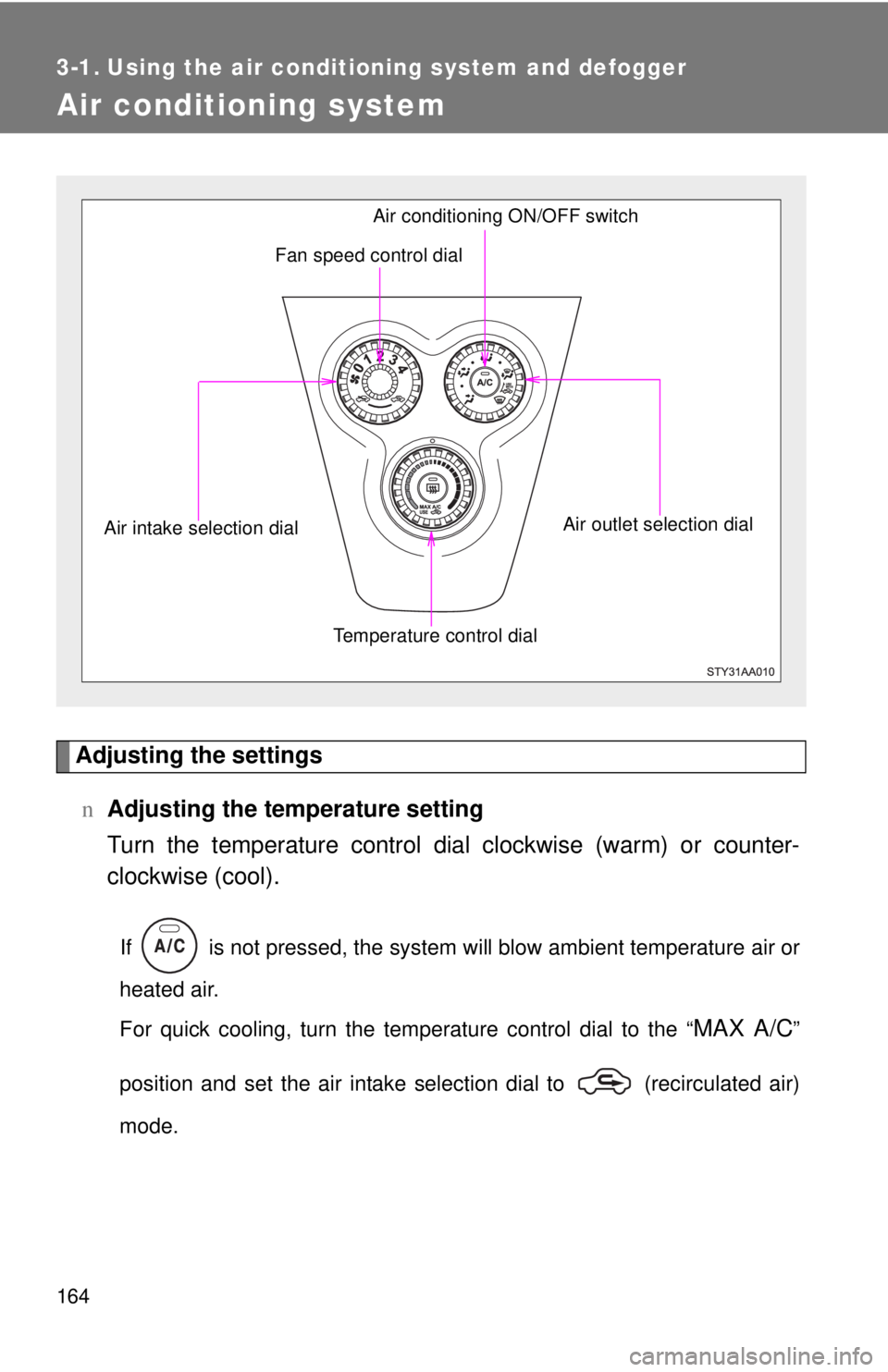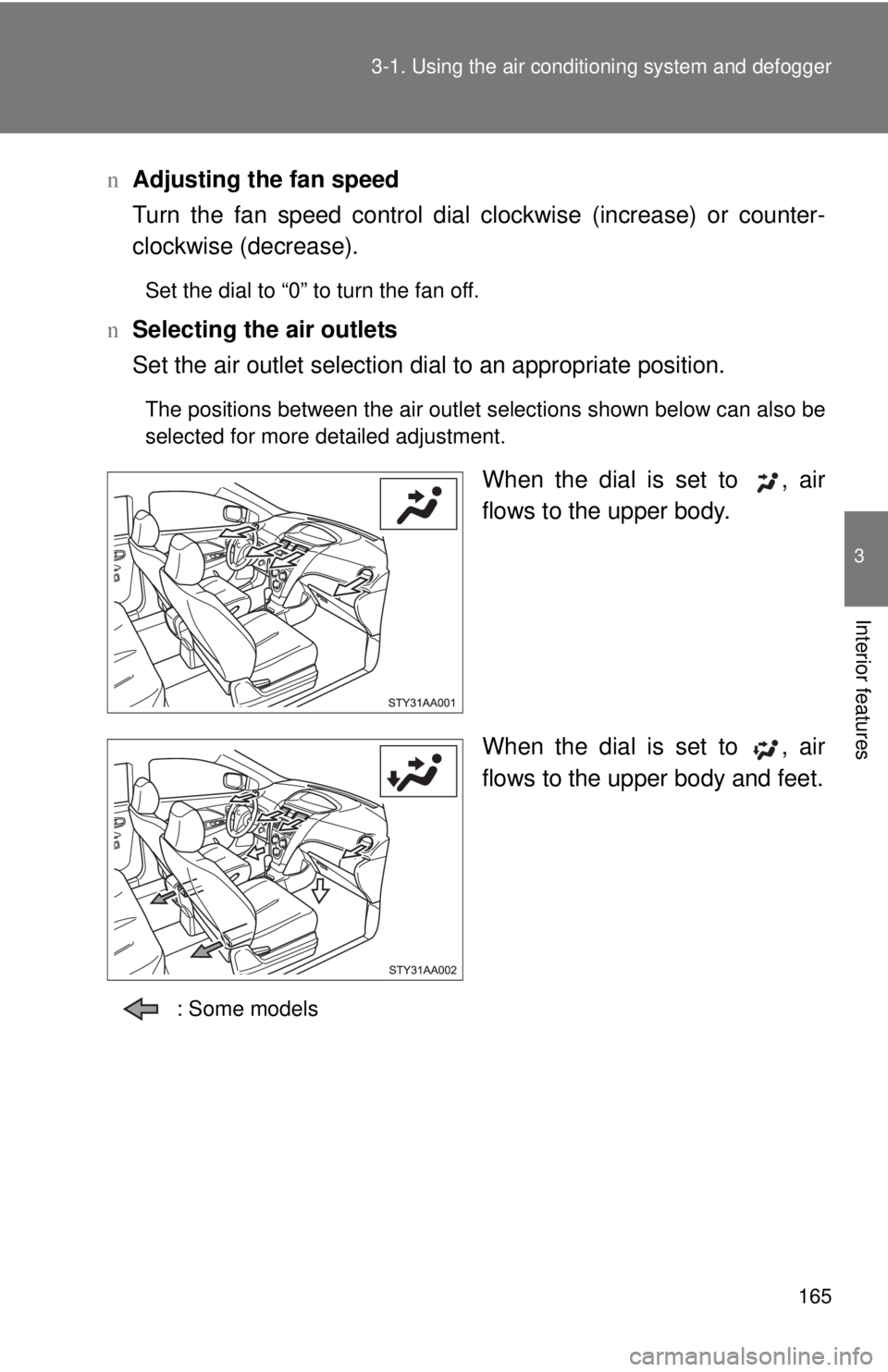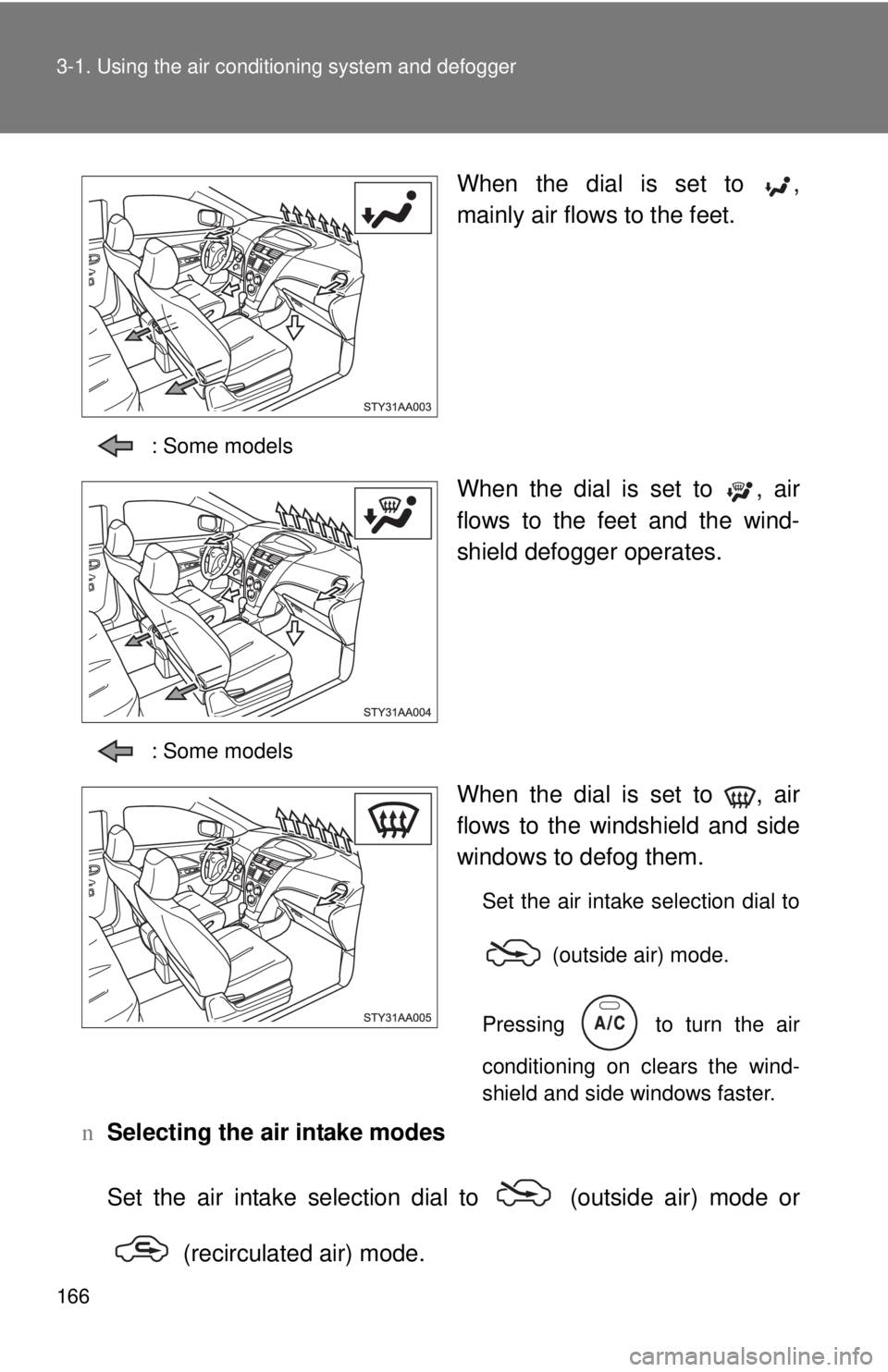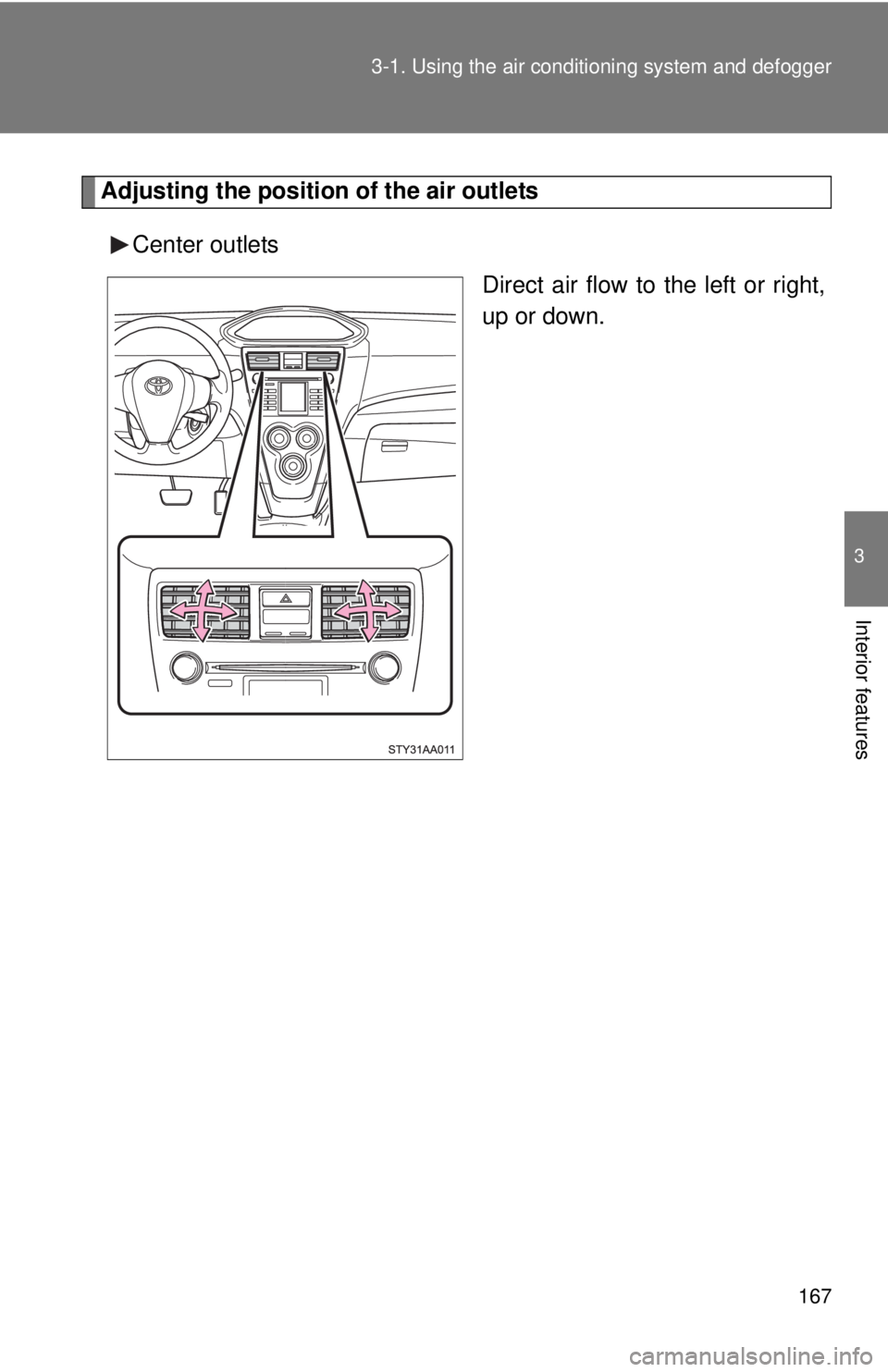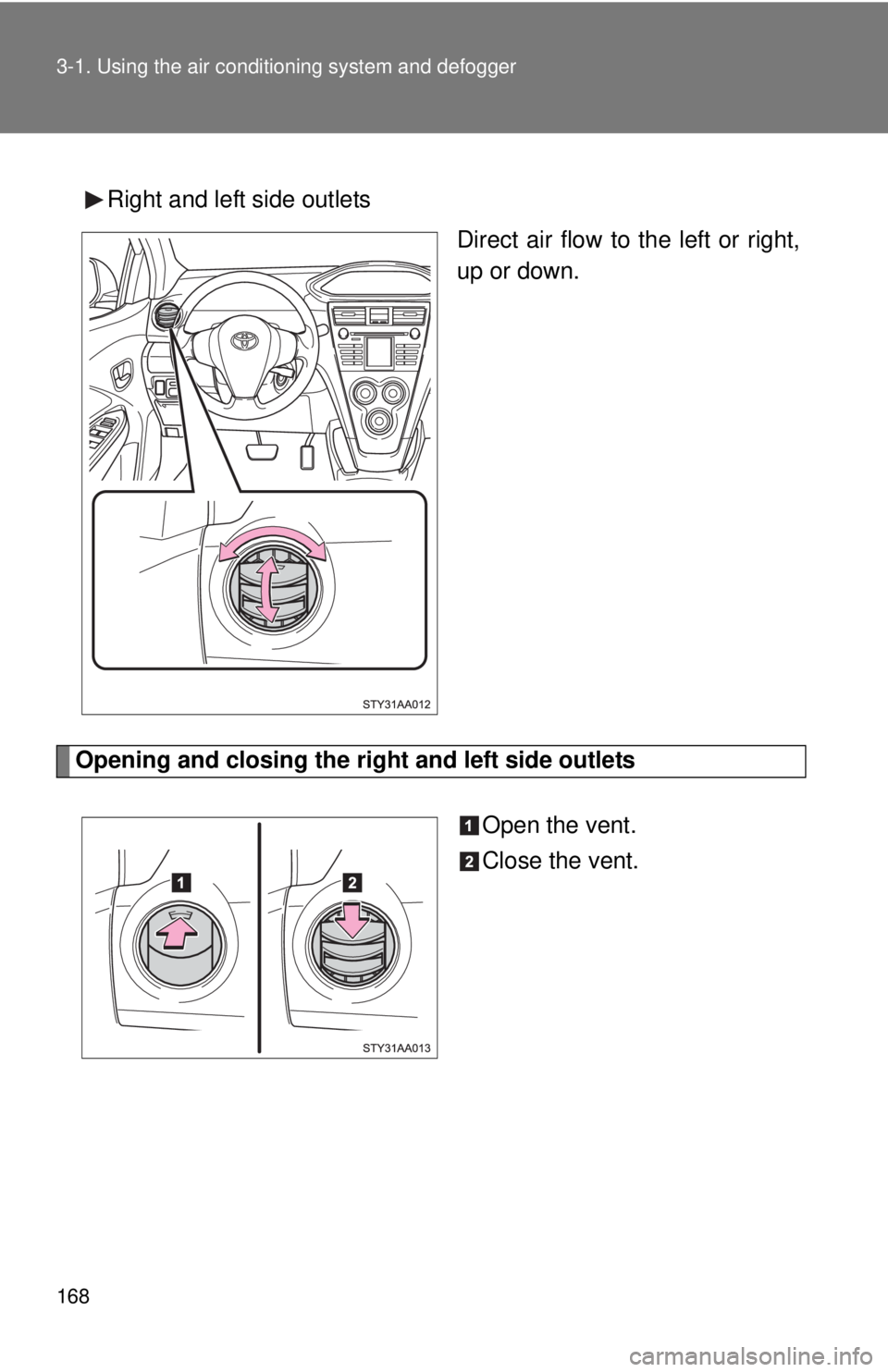TOYOTA YARIS SEDAN 2010 Owners Manual
YARIS SEDAN 2010
TOYOTA
TOYOTA
https://www.carmanualsonline.info/img/14/59282/w960_59282-0.png
TOYOTA YARIS SEDAN 2010 Owners Manual
Trending: deactivate airbag, spark plugs, keyless, inflation pressure, wheelbase, wiper fluid, door lock
Page 171 of 386
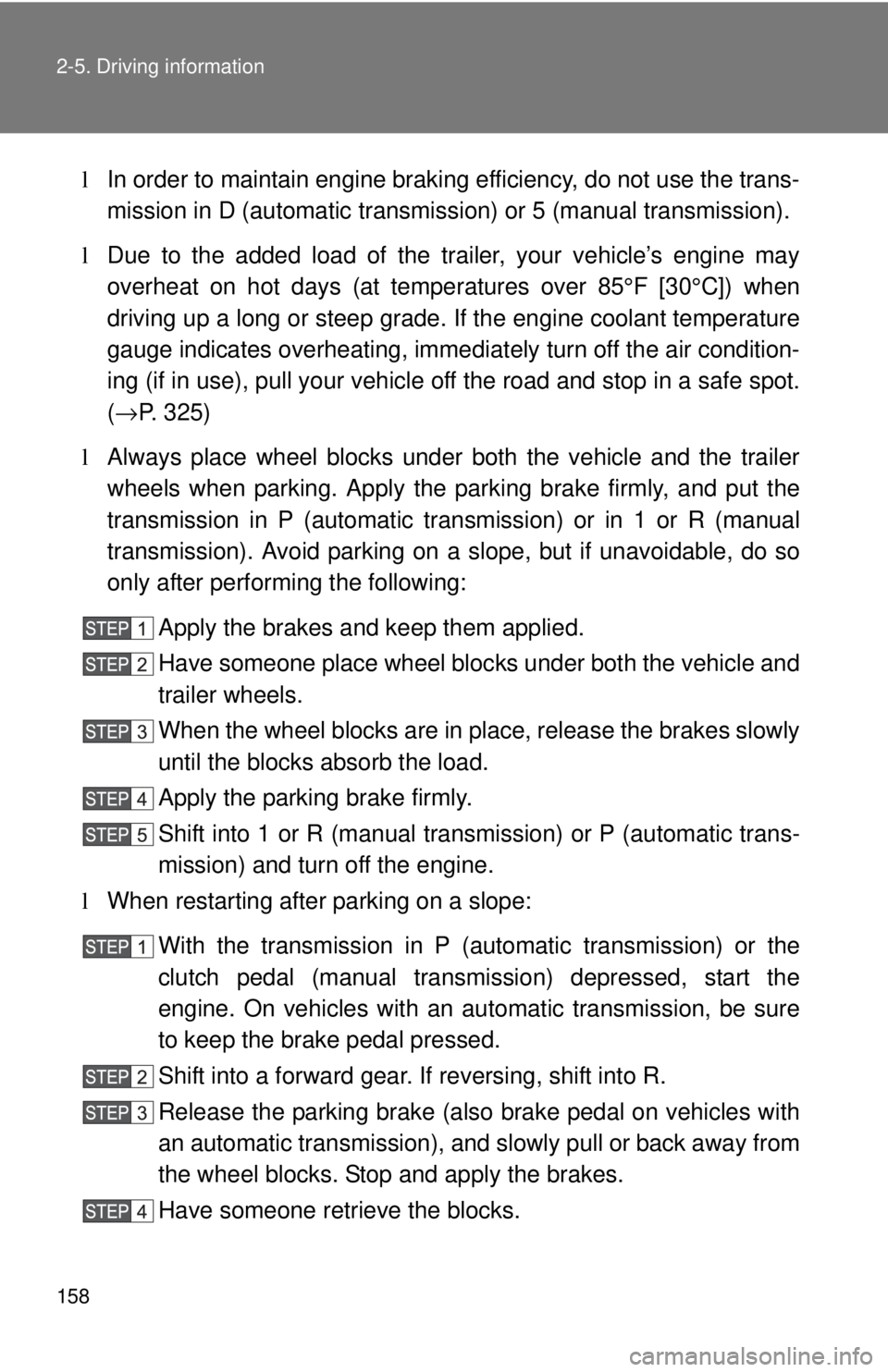
158 2-5. Driving information
lIn order to maintain engine braking efficiency, do not use the trans-
mission in D (automatic transmission) or 5 (manual transmission).
l Due to the added load of the trailer, your vehicle’s engine may
overheat on hot days (at temper atures over 85°F [30°C]) when
driving up a long or steep grade. If the engine coolant temperature
gauge indicates overheating, immediately turn off the air condition-
ing (if in use), pull your vehicle off the road and stop in a safe spot.
( → P. 325)
l Always place wheel blocks under both the vehicle and the trailer
wheels when parking. Apply the parking brake firmly, and put the
transmission in P (automatic transmission) or in 1 or R (manual
transmission). Avoid parking on a slope, but if unavoidable, do so
only after performing the following:
Apply the brakes and keep them applied.
Have someone place wheel bloc ks under both the vehicle and
trailer wheels.
When the wheel blocks are in place, release the brakes slowly
until the blocks absorb the load.
Apply the parking brake firmly.
Shift into 1 or R (manual transmission) or P (automatic trans-
mission) and turn off the engine.
l When restarting after parking on a slope:
With the transmission in P (automatic transmission) or the
clutch pedal (manual transmission) depressed, start the
engine. On vehicles with an au tomatic transmission, be sure
to keep the brake pedal pressed.
Shift into a forward gear. If reversing, shift into R.
Release the parking brake (also brake pedal on vehicles with
an automatic transmission), and slowly pull or back away from
the wheel blocks. Stop and apply the brakes.
Have someone retrieve the blocks.
Page 172 of 386
159
2-5. Driving information
2
When driving
CAUTION
n
To avoid an accident
lDo not exceed 45 mph (72 km/h) or posted towing speed limit, whichever
is lower. As instability (swaying) of the towing vehicle-trailer combination
increases as speed increases, exceeding 45 mph (72 km/h) may cause
loss of control.
l Slow down and downshift before descending steep or long downhill
grades. Do not make sudden downshifts.
l Avoid holding the brake pedal down too long or too frequently. This could
cause the brakes to overheat and result in reduced braking efficiency.
Page 173 of 386
160
2-5. Driving information
Dinghy towing (vehicles with an automatic transmission)
NOTICE
nTo avoid serious damage to your vehicle
Do not tow your vehicle with four wheels on the ground.
Your vehicle is not designed to be dinghy towed (with 4 wheels on
the ground) behind a motor home.
Page 174 of 386
161
2-5. Driving information
2
When driving
Dinghy towing (vehicles with a manual transmission)
Towing your vehicle with 4 wheels on the groundTo prevent damage to your vehicle, perform the following procedures
before towing.
Shift the shift lever to N.
Turn the engine switch to the ACC position.
Ensure that the audio system and other powered devices have been
turned off.
Release the parking brake.
After towing, leave the engine in idle for at least 3 minutes before
driving the vehicle.
nNecessary equipment and accessories
Specialized equipment and accessories are required for dinghy towing. Con-
tact the service branch of the motor home manufacturer regarding recom-
mended equipment.
Your vehicle can be dinghy towed in a forward direction (with 4
wheels on the ground) behind a motor home.
Dinghy towing does not elimi-
nate the possibility of damage
to your vehicle.
Page 175 of 386
162 2-5. Driving information
NOTICE
nDinghy towing direction
n To prevent the steering from locking
Ensure the engine switch is in the ACC position.
Do not tow the vehicle backwards.
Doing so may cause serious damage.
Page 176 of 386
164
3-1. Using the air conditioning system and defogger
Air conditioning system
Adjusting the settingsn Adjusting the temperature setting
Turn the temperature control dial clockwise (warm) or counter-
clockwise (cool).
If is not pressed, the system will blow ambient temperature air or
heated air.
For quick cooling, turn the temperature control dial to the “
MAX A/C”
position and set the air intake selection dial to (recirculated air)
mode.
Fan speed control dial
Air outlet selection dial
Air conditioning ON/OFF switch
Temperature control dial
Air intake selection dial
Page 177 of 386
165
3-1. Using the air conditioning system
and defogger
3
Interior features
nAdjusting the fan speed
Turn the fan speed control dial clockwise (increase) or counter-
clockwise (decrease).
Set the dial to “0” to turn the fan off.
n Selecting the air outlets
Set the air outlet selection di al to an appropriate position.
The positions between the air outlet selections shown below can also be
selected for more detailed adjustment.
When the dial is set to , air
flows to the upper body.
When the dial is set to , air
flows to the upper body and feet.
: Some models
Page 178 of 386
166 3-1. Using the air conditioning system and defogger
When the dial is set to ,
mainly air flows to the feet.
: Some models
When the dial is set to , air
flows to the feet and the wind-
shield defogger operates.
: Some models
When the dial is set to , air
flows to the windshield and side
windows to defog them.
Set the air intake selection dial to
(outside air) mode.
Pressing
to turn the air
conditioning on clears the wind-
shield and side windows faster.
n Selecting the air intake modes
Set the air intake selection dial to (outside air) mode or
(recirculated air) mode.
Page 179 of 386
167
3-1. Using the air conditioning system
and defogger
3
Interior features
Adjusting the position of the air outlets
Center outlets Direct air flow to the left or right,
up or down.
Page 180 of 386
168 3-1. Using the air conditioning system and defogger
Right and left side outlets
Direct air flow to the left or right,
up or down.
Opening and closing the right and left side outlets
Open the vent.
Close the vent.
Trending: steering wheel adjustment, auxiliary battery, air conditioning, fuel filter, high beam, fuel pressure, coolant


